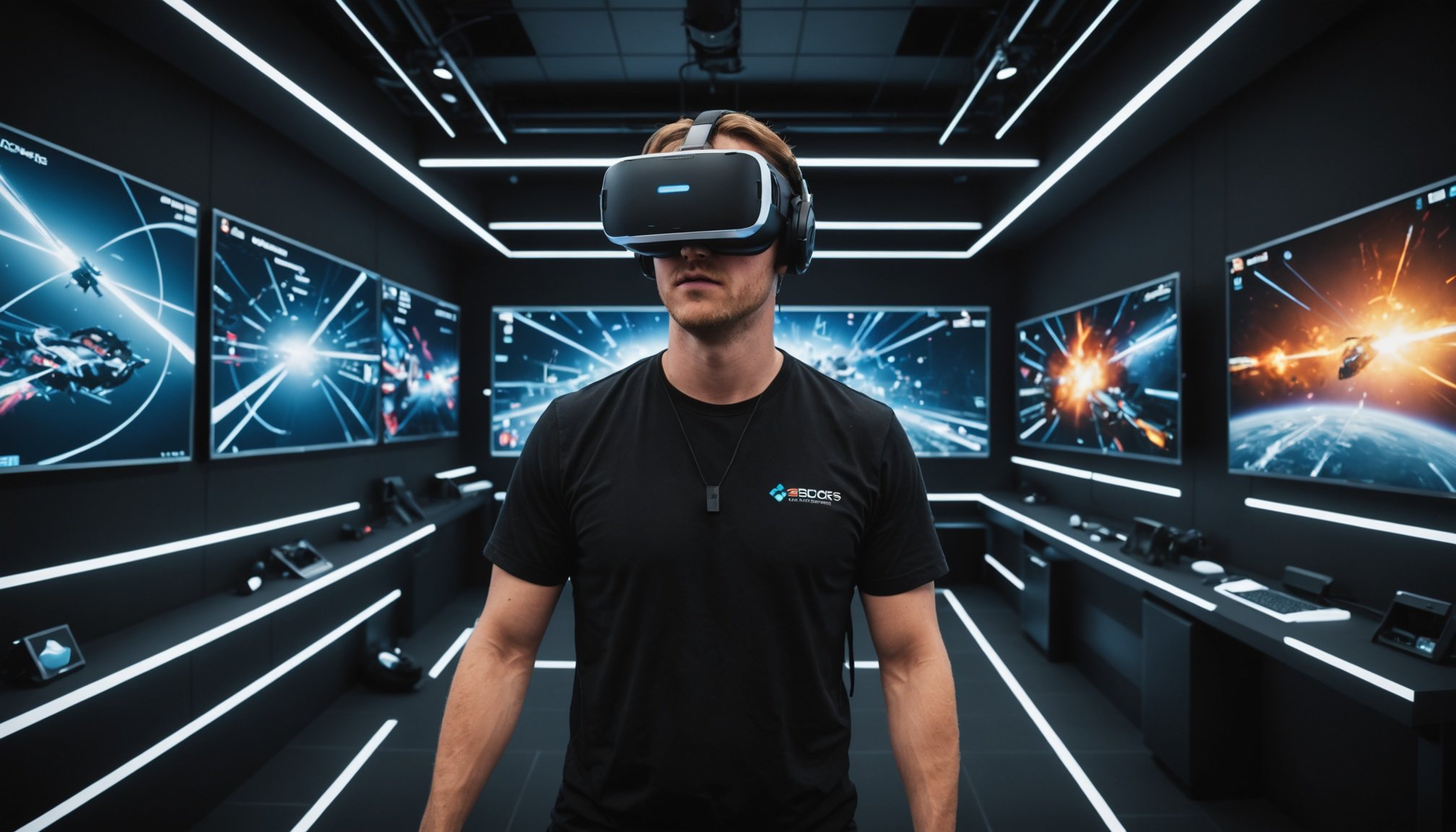Understanding VR Game Mode Transitions
In virtual reality, game mode transitions are vital to maintaining an immersive gameplay experience and ensuring a fluid player experience. These transitions involve shifting from one game mode to another, seamlessly integrating different gameplay environments or mechanics. Successful VR transitions enhance the player’s sense of presence, reducing any potential disorientation that might disrupt engagement.
The core elements that contribute to effective game mode transitions include visual and audio cues, which prepare the player for changes by subtly signaling impending shifts. This preparation helps maintain continuity, thereby enhancing player immersion. Well-timed and paced transitions maintain a consistent flow, ensuring that players remain engrossed without sudden interruptions.
Also read : Unleashing AI in Procedural Quest Creation: Transforming RPG Adventures for Endless Exploration
Moreover, thoughtful design in VR transitions significantly impacts player engagement. When transitions align with the narrative and visual style of a game, they fortify the player’s connection to the game world. This coherence encourages prolonged gameplay and elevates overall satisfaction.
In sum, the significance of well-designed VR game mode transitions cannot be underestimated, as they fundamentally shape the quality of the immersive experience, directly affecting how players perceive and interact with the virtual world they inhabit.
In parallel : Crafting Authentic NPC Interactions: Essential Strategies for Immersive Sandbox Gaming
Design Principles for Effective Transitions
In the realm of virtual reality, understanding and applying key design principles is essential for creating seamless transitions that elevate the user experience. The principles that guide smooth transition design focus on consistency and coherence across game modes, ensuring players remain fully immersed.
Principles of Smooth Transition Design
Smooth transitions rely on the integration of consistent design elements across various modes. Ensuring that visual and interactive components share a unified style and theme helps maintain continuity. This approach minimises any potential disconnect that could arise when players switch between different environments or gameplay mechanics.
Visual and Audio Cues
Visual and audio cues play a crucial role in preparing players for transitions. Subtle indicators, such as a gradual dimming of lights or an escalating soundtrack, signal impending changes, thereby promoting a smooth shift without breaking immersion. The strategic use of sound and visuals can significantly enhance the perception of fluidity.
Timing and Pacing in Transitions
Effective timing and pacing are central to designing seamless transitions. Synchronising visual and auditory elements with interactive features ensures that shifts feel natural and intuitive. Consistent pacing, tailored to the narrative flow, helps players anticipate changes, fortifying their connection to the virtual world and enhancing overall engagement.
Techniques for Implementing Game Mode Transitions
Implementing game mode transitions in Unity can significantly enhance the interactive design in VR. To create seamless transitions, first employ Unity’s Timeline feature, which allows developers to choreograph visual, audio, and gameplay changes with precision.
Step-by-Step Guide to Using Unity
-
Set Up Scene Hierarchies: Organise your scene’s objects and elements to easily manage transitions between modes. This helps in keeping your code clean and modular.
-
Utilise Animator and Timeline: Use the Animator component to manage animations smoothly, and the Timeline for synchronising various elements during transitions.
-
Script Transition Effects: Harness C# scripting to add custom transition effects. Scripts can be used to trigger animations or changes in the game environment at specific points, enabling dynamic transitions.
Testing and Iterating on Designs
-
User Feedback: Conduct playtests focusing on transitions, gathering invaluable insights to refine the experience.
-
Iterative Design: Implement a cycle of testing, feedback, and adjustment. This process is crucial for honing the player experience and ensuring that transitions feel intuitive and engaging.
Case Studies of Successful VR Game Mode Transitions
Exploring case studies offers invaluable insight into successful VR game transitions. Several popular VR games set benchmarks by executing seamless, immersive transitions that enhance the player’s experience. These games use tightly integrated visual, audio, and interaction cues, ensuring players remain engaged throughout mode shifts.
Exploration of Popular VR Games
Examining specific VR games reveals the mechanics behind successful transitions. For instance, in games like Beat Saber, transitions are orchestrated through rhythmic alignment, creating continuity in immersive gameplay. By synchronising interactions with visual and audio transitions, these games minimise any jarring disruptions.
Analysis of Design Successes
The best examples of transitions are often those that feel almost invisible to the player, seamlessly woven into the gameplay and narrative arc. Such design success results from meticulous planning, rigorous testing, and a deep understanding of the player experience.
Lessons Learned from Game Failures
Conversely, there are essential lessons from VR games that struggle with transitions. Poor timing and abrupt shifts can disorient players, breaking immersion. Games that neglect pacing or mismatch cues often create fragmented experiences, teaching developers the importance of coherence and alignment in crafting immersive worlds.
Insights from Industry Experts
Gain deeper understanding through expert insights into VR game transitions, a crucial aspect of VR development. Industry developers stress the importance of aligning with established industry standards to craft fluid experiences.
Engaging with Game Developers
Engagements with developers highlight strategies such as embedding immersive gameplay elements within transitions to maintain player involvement. Experts suggest using narrative-driven cues as guidelines for seamless integration. This methodology prioritises the player’s sense of presence during shifts.
Recommendations from Conferences
Industry conferences offer valuable insights, addressing trends and practices that enhance player experience during transitions. A central theme is the innovation in real-time feedback mechanisms, providing developers with immediate data on player responses to transitions, thus enabling timely adjustments.
Anticipating Future Trends
Looking forward, experts predict heightened focus on adaptive transitions, where the experience adapts fluidly to real-time player actions and preferences. This advancement underscores a shift towards personalisation within VR development, aiming for increasingly bespoke player experiences.
These insights equip developers with critical knowledge to advance their VR transitions strategies, ensuring a more engaging and cohesive virtual world. Embracing these evolving practices fosters not only improved transitions but deepens the overall immersive quality of VR experiences.
Tools and Resources for Developers
Enhancing VR development requires a robust understanding of the tools and resources available to developers. These instruments and communities elevate the capability to create immersive experiences.
Software for Creating Transitions
Key software solutions are essential for crafting seamless VR transitions. Unity is particularly popular, offering comprehensive features for designing interactive elements. Unreal Engine also provides robust tools for engaging player experiences and supports intricate animation designs to ensure immersive gameplay.
Online Communities and Forums
Active participation in online communities, such as Reddit’s VR development subreddits or forums like Stack Overflow, is invaluable. These platforms facilitate knowledge exchange and troubleshooting, fostering a rich learning environment where developers can discuss VR transitions and refine their techniques collaboratively.
Educational Resources and Tutorials
Numerous educational resources are available to help developers deepen their skills. Websites like Coursera and Udemy offer courses tailored to VR development, focusing on everything from the fundamentals of interactive design to advanced transition techniques. Engaging with these materials ensures developers stay updated with industry trends, continually elevating their craft and contributing to the field’s innovation.











